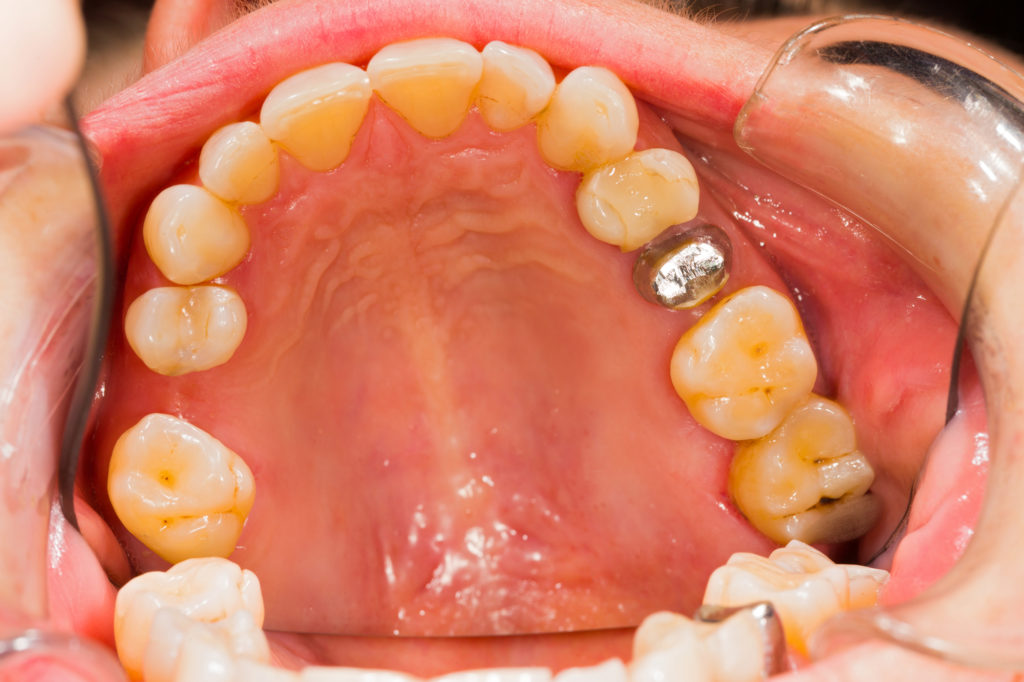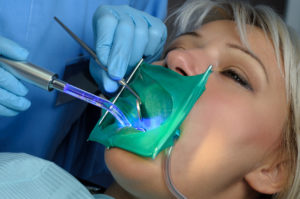
If you have been on a Healthy Breast journey for a while, then no doubt you are familiar with Essential #5 of the 7 Essentials System®, Embrace Biological Dentistry. For many people, a crucial part of taking care of oral health is getting rid of amalgam fillings or amalgam-filled crowns. Choosing how to remove them, and most importantly, who will do the procedure, is not as easy as simply making an appointment. Dental amalgams contain some of the most dangerous heavy metals out there, so make sure you work with a dentist who is SMART (Safe Mercury Amalgam Removal Technique) and knows how to take the precautions necessary to avoid exposing you to this harmful toxin.
The Problem with Amalgams (And Unsafe Amalgam Removal)
All dental amalgams, including fillings and crowns, contain roughly 50% mercury. According to research, fillings made with this material are constantly emitting methyl mercury vapors into the body and into the air. Activities such as brushing your teeth, chewing food, drinking hot beverages, and clenching or grinding your teeth can all cause mercury vapors to be released at high levels.
For a very impressive, albeit daunting, visual explanation of just how much vapor gets released during common every day functions, be sure to check out this video.
The one activity that can produce extremely hazardous amounts of mercury vapor is the removal of amalgam fillings. According to a report put out by the University of Massachusetts as well as dozens of other studies, the individuals most at risk of exposure during dental procedures are “dental professionals, dental staff, dental patients, and/or fetuses.”
Mercury is a metallo-estrogen, a neuro-toxin and one of the most poisonous substances on the planet. Mercury exposure can eventually lead to:
–Neurological conditions and cognitive decline;

-Damage to the nervous system;
–Thyroid and adrenal gland issues;
-Chronic systemic inflammation;
-Cancer, including Breast Cancer.
What is a SMART Certified Dentist?
There are tons of dentists out there that claim to be “holistic” or “biological.” There are even more who advertise that they can effectively remove amalgams. Unless they have specific training in how to safely remove them in a way that does not expose patients, staff and the environmental to dangerous toxins, don’t believe them! For a complete list of must-ask questions to determine if the biological dentist you are considering is legitimate, be sure to check out this article.
One of the best training programs in the world when it comes to safely removing mercury from the mouth is called the Safe Mercury Amalgam Removal Technique, or SMART. SMART was created by the International Association of Oral Medicine and Toxicology in 2016 and updated in 2019. To date there are many holistic dental offices around the world who have become SMART certified. You can find a listing of qualified dentists on the IAOMT website.
“If your dentist is a SMART certified dentist then you are going to know that they have at least been through the training and [can] handle the mercury in a way that is going to be safe for the patient, safe for the dental staff, safe for [the doctor] and safe for the environment,” says Dr. Stuart Nunnally, a Texas-based holistic dentist and a leader in safe amalgam removal.
What Kinds of Precautions Do SMART Dentists Have in Place?
According to the IAOMT, Safe Amalgam Removal Technique (SMART) trained dentists should have these safety measures in place:
-the presence of an “amalgam separator” in the procedure room. This device collects mercury waste so that it is separated from other waste and does not go into the city water supply.
-proper filtration, such as an oral aerosol vacuum, in each room where amalgam removal occurs.
-windows left open if possible, to supply adequate fresh air ventilation.
-patient protection and detoxification procedures before the procedure specifically designed to remove heavy metals internally. This may include charcoal, chlorella, spirulina, or other natural substances that have been shown to chelate heavy metals.
-protective gowns, face shields, hair nets, respirator-grade masks, non-latex gloves and other coverings for dental personnel so that they do not come into contact with mercury particles which may allude suction devices.
-a “full body, impermeable barrier” in addition to a full face/head/neck barrier for the patient.
– a rubber dam (aka a dental dam) as well as a saliva ejector for the patient in order to isolate the operation site from the rest of the mouth and prevent mercury particles from being ingested.
-a nasal mask (or other external oxygen delivery system) for the patient to add extra protection from inhalation of mercury particles.
-fast-acting evacuation procedures on the part of dental professionals doing the operation.
-lots of water to cool the area (high temperatures will release more vapors).
-the use of a small diameter carbide drill so that the amalgam can be sectioned into as large of pieces as possible for removal.
-proper and thorough cleaning and flushing of the patient’s mouth with water after the procedure.
-a natural heavy metal chelating rinse, such as chlorella or charcoal, given to the patient after the procedure.
– proper disposal and clean up of all equipment, gowns, masks and hazardous material immediately after the procedure.
In addition, there are other considerations that your holistic dentist should go over with you before you even get in that chair. Some individuals should not get amalgam removal done at all, such as women who are pregnant or breast feeding. Also, those who are very sensitive, have low immunity or other complications may need to complete steps to improve immunity or other factors before the procedure. For more information and a more thorough explanation of the above procedures, be sure to visit the IAOMT SMART page.
When It Comes to Amalgam Removal, Better Safe Than Sorry
It may seem a bit daunting to read through all of the above guidelines. It may be even more intimidating to think about discussing all these points with a potential dentist. When it comes to amalgam removal, however, I feel it is vitally important that we not only understand what is at stake, but that we also know exactly what a “safe” environment for amalgam removal looks like.
And don’t worry—you don’t have to read all of the above out loud to your prospective dentist. All you have to do is ask him or her a simple question, like “What are your safety procedures for removing amalgams?”
If you are in the know about what these procedures look like, then you should recognize all of them in what your dental professional is describing regarding his or her own procedures as well.
Better yet, check out the IAOMT website and find a dentist that has been SMART certified. Then you will know for sure that the person you are working with for your amalgam removal is legit!
Be sure to stay tuned for Part II of this series to learn how mercury and other metals in your mouth may be harming you in ways that may surprise you—and what you can do about it.
